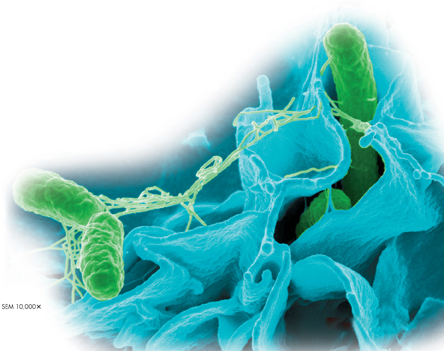Three Domains Genomic analysis has revealed that the two main prokaryotic groups are even more different from each other, and from eukaryotes, than previously thought. So biologists established a new taxonomic category—the domain. A domain is a larger, more inclusive category than a kingdom. Under this system, there are three domains—domain Bacteria (corresponding to the kingdom Eubacteria); domain Archaea (which corresponds to the kingdom Archaebacteria); and domain Eukarya (kingdoms Fungi, Plantae, and Animalia, and the “Protista”).
Why do we put quotations around about the old kingdom Protista? Well, scientists now recognize that this is a paraphyletic group. This means that there is no way to put all unicellular eukaryotes into a clade that contains a single common ancestor, all of its descendants, and only those descendants. Since only monophyletic groups are valid under evolutionary classification, we use quotations to show that this is not a true clade. A summary of the three-domain system is shown in Figure 18–14.
The Tree of All Life
 What does the tree of life show?
What does the tree of life show?
Remember that modern evolutionary classification is a rapidly changing science with a difficult goal—to present all life on a single evolutionary tree. As evolutionary biologists study relationships among taxa, they regularly change not only the way organisms are grouped, but also sometimes the names of groups. Remember that cladograms are visual presentations of hypotheses about relationships, and not hard and fast facts.  The tree of life shows current hypotheses regarding evolutionary relationships among the taxa within the three domains of life.
The tree of life shows current hypotheses regarding evolutionary relationships among the taxa within the three domains of life.
Domain Bacteria Members of the domain Bacteria are unicellular and prokaryotic. Their cells have thick, rigid walls that surround a cell membrane. The cell walls contain a substance known as peptidoglycan (PEP tih doh gly kun). These bacteria are ecologically diverse, ranging from free-living soil organisms to deadly parasites. Some photosynthesize, while others do not. Some need oxygen to survive, while others are killed by oxygen. This domain corresponds to the kingdom Eubacteria.

FIGURE 18–15 Salmonella typhimurium (green) invading human epithelial cells
Table of Contents
- Formulas and Equations
- Applying Formulas and Equations
- Mean, Median, and Mode
- Estimation
- Using Measurements in Calculations
- Effects of Measurement Errors
- Accuracy
- Precision
- Comparing Accuracy and Precision
- Significant Figures
- Calculating With Significant Figures
- Scientific Notation
- Calculating With Scientific Notation
- Dimensional Analysis
- Applying Dimensional Analysis




